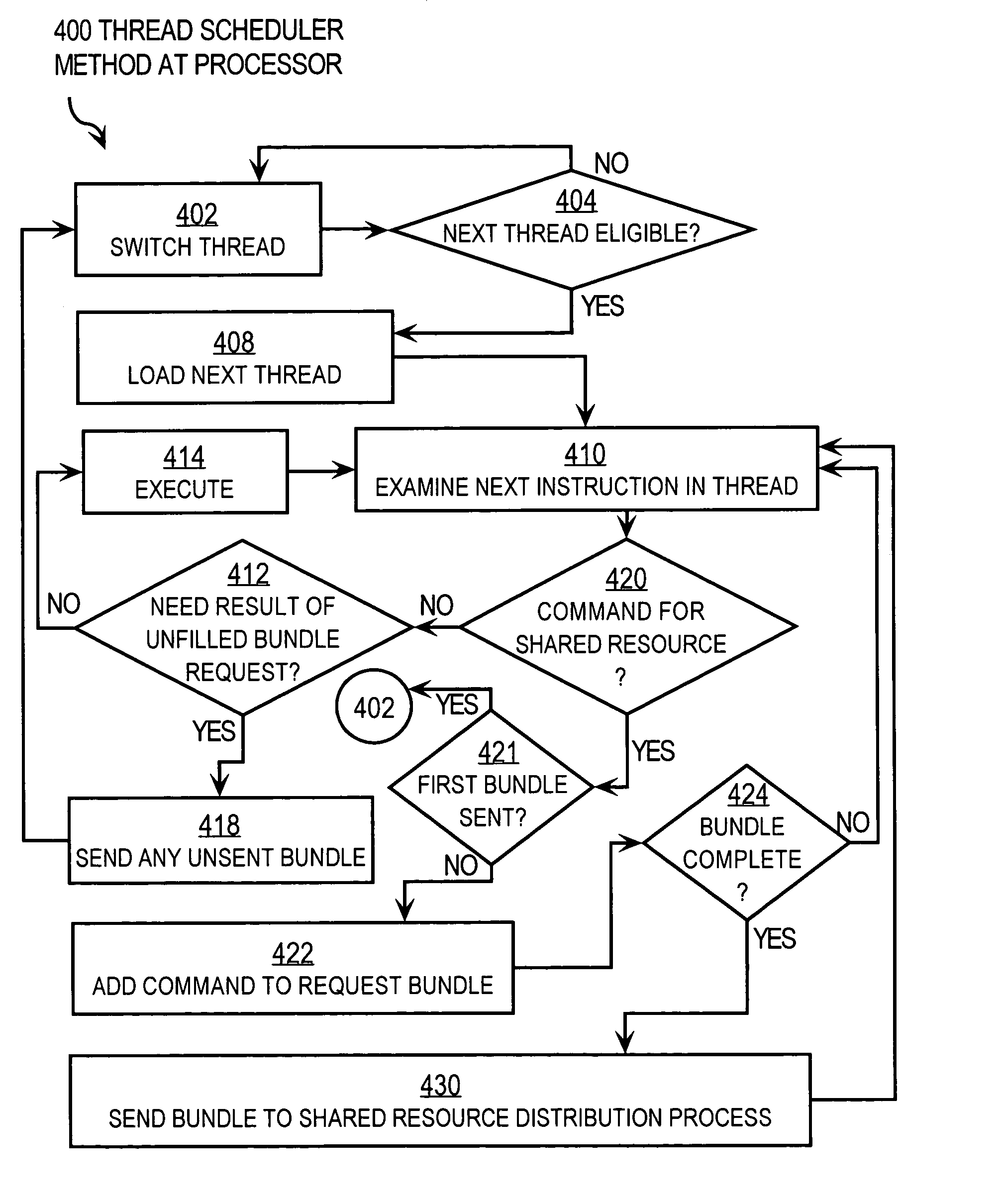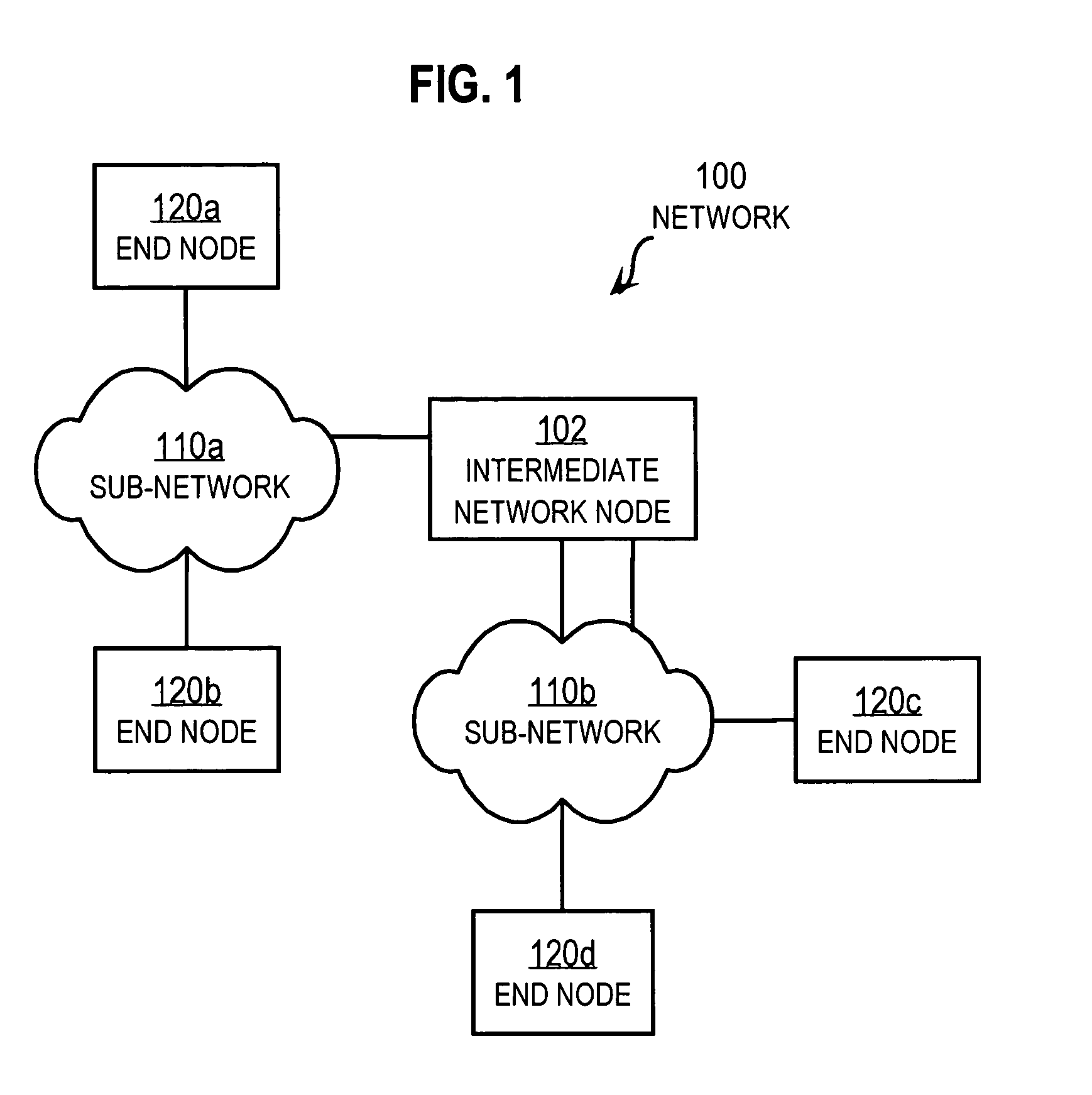Techniques for reducing thread overhead for systems with multiple multi-theaded processors
a technology of multi-theaded processors and thread overhead, applied in multi-programming arrangements, program control, instruments, etc., can solve the problems of lock and thread overhead, large amount of time, and add to thread overhead
- Summary
- Abstract
- Description
- Claims
- Application Information
AI Technical Summary
Problems solved by technology
Method used
Image
Examples
Embodiment Construction
[0024]Techniques are described for processing requests from a processing thread for off-processor resources shared among multiple threads. In the following description, for the purposes of explanation, numerous specific details are set forth in order to provide a thorough understanding of the present invention. It will be apparent, however, to one skilled in the art that the present invention may be practiced without these specific details. In other instances, well-known structures and devices are shown in block diagram form in order to avoid unnecessarily obscuring the present invention.
[0025]Embodiments of the invention are described in detail below in the context of a switching system on a router that has four processors, each allowing up to four threads, that share use of a TCAM and QDR using a lock controller for updating routing tables while forwarding data packets at a high speed line rate. However, the invention is not limited to this context. In various other embodiments, m...
PUM
 Login to View More
Login to View More Abstract
Description
Claims
Application Information
 Login to View More
Login to View More - R&D
- Intellectual Property
- Life Sciences
- Materials
- Tech Scout
- Unparalleled Data Quality
- Higher Quality Content
- 60% Fewer Hallucinations
Browse by: Latest US Patents, China's latest patents, Technical Efficacy Thesaurus, Application Domain, Technology Topic, Popular Technical Reports.
© 2025 PatSnap. All rights reserved.Legal|Privacy policy|Modern Slavery Act Transparency Statement|Sitemap|About US| Contact US: help@patsnap.com



